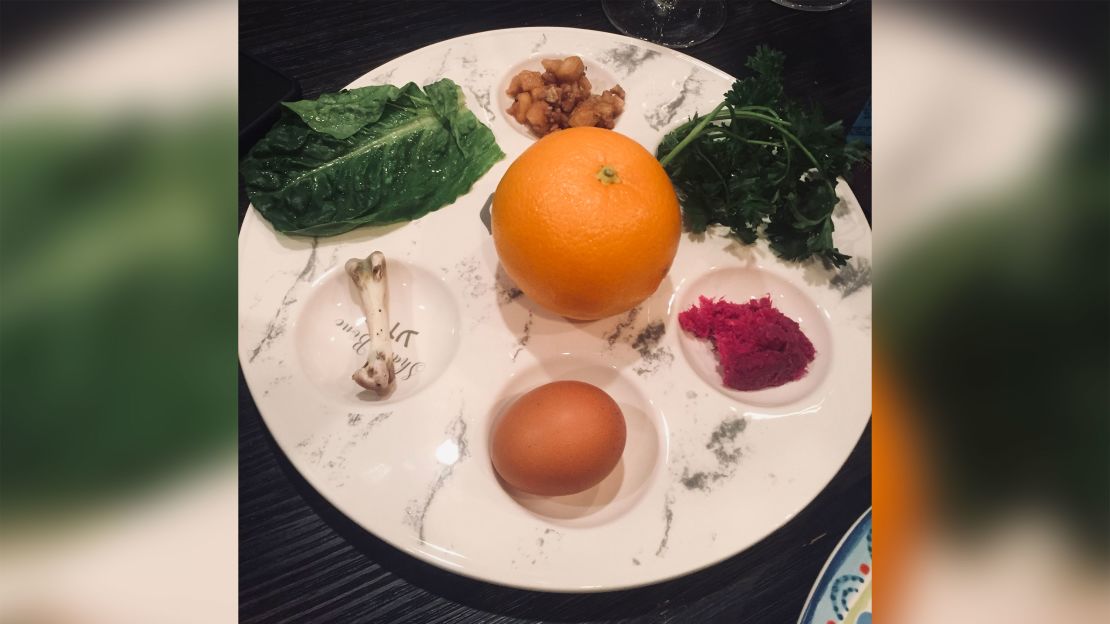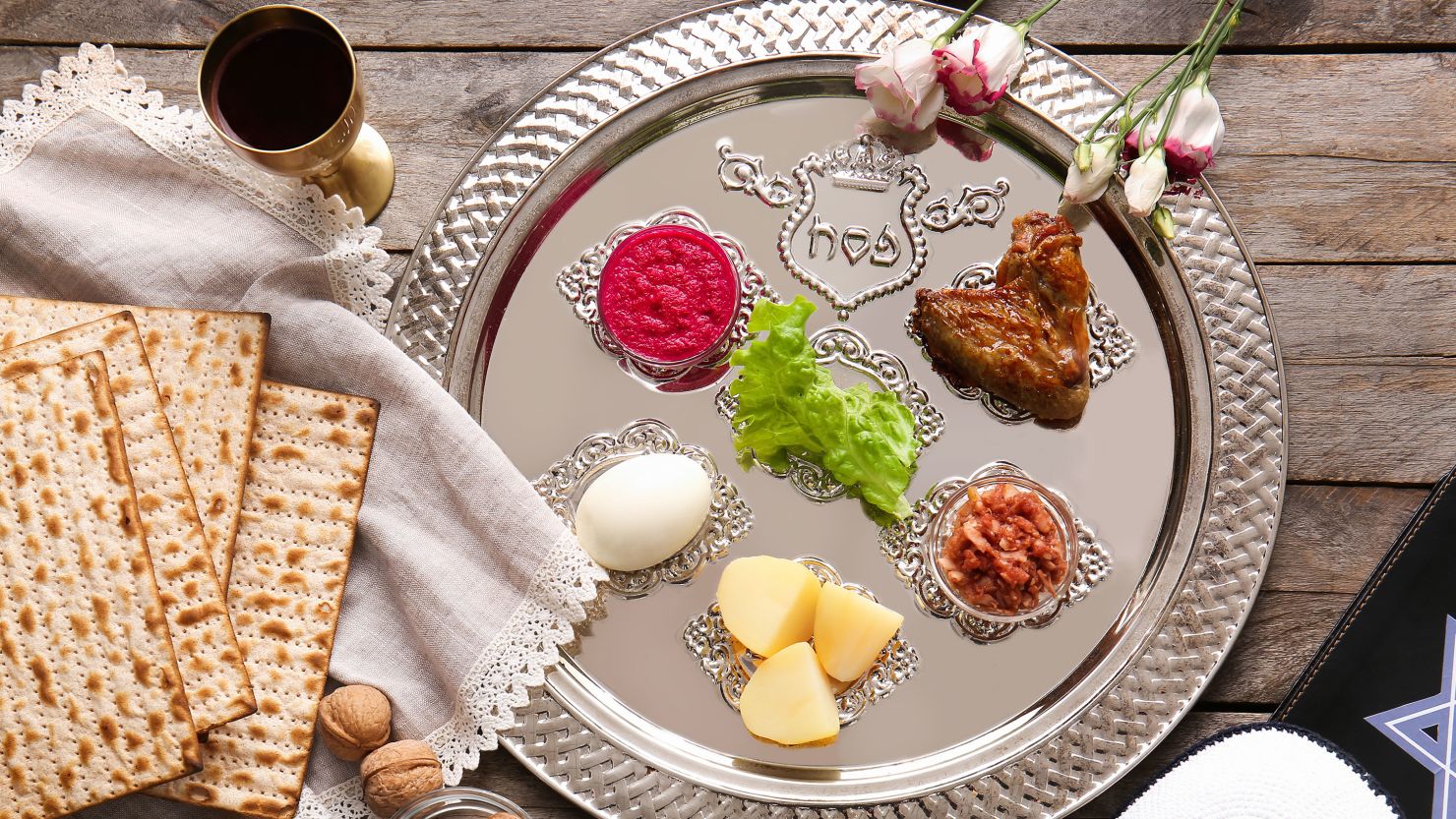A version of this story appeared in CNN’s Race Deconstructed newsletter. To get it in your inbox every week, sign up for free here.
The host of the Passover seder I’ll attend Friday evening will include an orange on the ceremonial plate, as a means of acknowledging gay and lesbian struggles during the holiday that commemorates Jewish people’s liberation from bondage in Egypt.
The orange is a relatively recent addition to the seder plate. Susannah Heschel, a Jewish studies professor at Dartmouth College and the daughter of the civil rights leader Abraham Joshua Heschel, added the piece of fruit in the early 1980s.
“During the first part of the seder, I asked everyone to take a segment of the orange, make the blessing over fruit, and eat it as a gesture of solidarity with Jewish lesbians and gay men, and others who are marginalized within the Jewish community,” she wrote in 2001. “In addition, each orange segment had a few seeds that had to be spit out – a gesture of spitting out, repudiating the homophobia that poisons too many Jews.”
The inclusion of the orange, which some use to represent feminism, shines a light on a wider pattern: Over the course of decades, many celebrants have used Passover to signal their support for a variety of freedom struggles – to ask and answer questions about the world around them and the role they want to play in it.
For instance, in April 1969, some 800 people – Jewish, Christian, Black, White – joined together in the basement of Lincoln Temple, a Black church in Washington, to hold the country’s first Freedom Seder. The event marked the one year that had passed since the assassination of Martin Luther King Jr. and also underscored Black-Jewish kinship bonds.
Still curious about the evolution of Passover, I spoke with Rabbi Sandra Lawson, the director of racial diversity, equity and inclusion at Reconstructing Judaism, and Emily Tamkin, a senior editor at The New Statesman and the author of the forthcoming “Bad Jews: A History of American Jewish Politics and Identities” (and the host of the seder I’ll attend on Friday).
Our conversation has been lightly edited for length and clarity.

There are often debates over how to observe Passover – over whether there’s a “right” way to celebrate the holiday. What do you make of this tension?
Rabbi Sandra Lawson: There are many people who think that there’s a right way to observe any Jewish anything. But the beautiful thing about Judaism is that it’s constantly evolving. That’s how we survive.
Passover, I believe, is probably the most celebrated Jewish holiday because it takes place in the home, where people can infuse their customs, their food, as long as it subscribes to the rules of the holiday. But different customs have interpreted those rules to mean different things.
Emily Tamkin: I just wrote a whole book that basically says that there’s no one correct way to be Jewish, so it would be the height of hypocrisy for me to go out and say, “This is how you have to celebrate Passover.” What I really love about this particular holiday, aside from the story itself, is that, if you want it to be, it’s in conversation with the world around you – because it’s a story about overcoming oppression and about freedom and about searching for something better and about solidarity.
There’s so much there that you can use to explore not only Jewish history but present politics, if you so choose. And I think that if you look back at the last several decades of Jewish American history, you see people doing that. They’re bringing older traditions in conversation with their country and with the world and creating new traditions in the process.
What does Passover mean to you in 2022?
Lawson: I told my wife about the 10-minute seder (at the onset of the pandemic in 2020, some of Lawson’s students at Elon University, where she previously served as the Associate Chaplain for Jewish Life, created an abbreviated seder so that they could celebrate before leaving campus). We’re going to make matzo. We’re going to do the 10-minute seder. And we’re going to hang out.
Like a lot of people, I’ve had to rethink my own orthodoxy around the holiday. If you had told me three years ago that I would actually be in a plague during a time when we’re studying the plague and that I wouldn’t be doing the things I normally do on Passover, I would’ve thought that you were nuts. But the world changed. Making matzo (unleavened bread) has become one of our traditions.
There are people who are going to be upset and say, “You can’t make your own matzo.” I can. That’s a beautiful thing about this holiday. It’s celebrated in the home, and people have the freedom to observe the holiday however they want to.
There are people who say that you can’t do stuff. People say that to me because I don’t look like what they think a rabbi should look like. They say things like, “You can’t be a rabbi if you’re Black” or “You can’t be a rabbi if you’re queer” or “You can’t be a rabbi if you’re a woman.”
Tamkin: I am so glad that this year we are hopefully able to celebrate together indoors. The word in Yiddish class that we use for “pandemic” is the same word that we use for “plague.” So it certainly takes on a new resonance that this is happening now.
I also want to say that I celebrate Passover a bit differently now than I did when I was younger. As an adult hosting my own seders, I have an orange on my seder plates. One year, my husband and I used the HIAS Haggadah (the book or guide read during the seder), which has a prompt about refugees now to talk and think about while you’re having your own seder.
To me, this is a holiday about knowing who you are and not letting anybody take that away from you, and also extending that same right to everyone.
What’s on your Passover menu this year?
Lawson: The thing that makes my wife’s and my seder plate different is that we have a vegan house. And early on, I was trying to figure out how to make a vegan seder plate and started doing some research. In place of an egg, we slice an avocado. And in place of the shank bone, a roasted beet. I also add an orange to my seder plate to remember and pay homage to the feminist movement.
And I haven’t done this yet, but I’m thinking about adding a tomato, which can represent farmworkers and highlight the lack of awareness and the lack of pay and the poor conditions for people who pick tomatoes.
Tamkin: I’ll have an orange on my seder plate to represent solidarity with LGBTQ and other marginalized people. But I understand that some people include it to mean feminism or to mean LGBTQ solidarity and feminism. When preparing for this interview, I saw that some people have suggested that for interfaith families you can have an artichoke on your seder plate. Some people turn to an olive for peace in the Middle East or Palestinian solidarity. There are just so many different things that you can include.
But what I want to stress is: More than whatever Haggadah you use, and more than whatever individual symbol you have on your seder plate, the important thing is that you’re thinking about what the holiday means – that you’re thinking about what the story meant then and what it means in your own life now.
I don’t want to tell anybody how to live or be. But, to me, it’s important not to get so hung up on any one song or piece of fruit that you lose sight of the fact that questioning and changing and doing things a little differently and deciding what to keep and what to shed are part of the Passover tradition, too.

